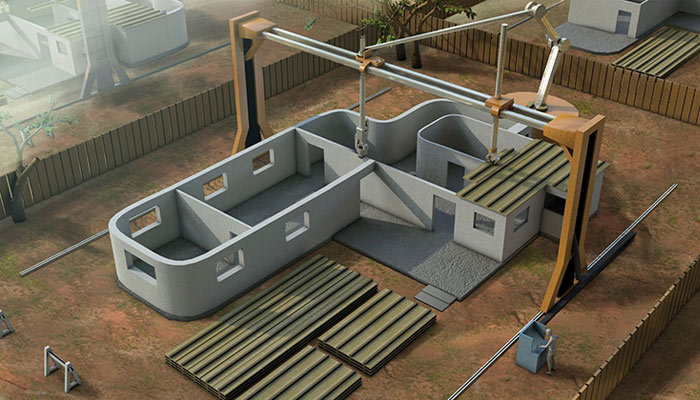As we navigate through the advancing landscape of technology, one innovation stands prominently in the industry of building: 3D manufacturing. This remarkable approach is transforming the manner developments and structures are designed and constructed, bringing forth a new phase of efficiency, eco-friendliness, and innovation.
Transforming Construction: One Stratum at a Phase
The integration of 3D printing in building offers various transformative advantages. Chief among these is the drastic decrease in material excess. Conventional infrastructure techniques typically produce in notable surplus resources that add to environmental pollution. In opposition, 3D manufacturing employs a meticulous layer-by-layer strategy, using only the necessary amount of resource and thus reducing surplus greatly.
Another noteworthy advantage is the dramatic decrease in building duration. Projects that conventionally require months can be finished in a segment of the duration with 3D printing systems. This acceleration is due to the self-operating functionality of 3D machines that can work 24/7 without human intervention, greatly minimizing overall project schedules.
Moreover, 3D printing introduces possibilities for constructing complex, tailored structures at no additional cost. The adaptability of 3D devices enables for intricate designs and shapes to be developed that would either be extremely pricey or impossible to attain with standard construction approaches. This feature not only elevates design aesthetics but also enables designers to optimize layouts for better performance and durability.

Lowering Expenses and Improving Reachability
Cost minimization is yet another notable advantage introduced by 3D printing in construction. By minimizing workforce costs and shortening the timeframe necessary to finalize undertakings, the overall budget linked to constructing frameworks is lowered. Furthermore, cheap 3D printing devices are growing more available, placing this technology attainable for emerging firms and independent creators enthusiastic to experiment with its capabilities.
The budget-friendliness of these units also opens opportunities for advancement in associated sectors such as garment printing. While primarily recognized in construction sectors, the scope of 3D manufacturing spans into numerous domains including design. Here, creators innovate with 3D manufactured attire, challenging design boundaries and revolutionizing textile design while gaining low production expenses.
A Green Era Powered by Innovation
Environmental responsibility is another pillar of this innovation’s attraction in the building field. 3D printing supports a sustainable method to development by minimizing substance surplus and power expenditure. Furthermore, it enables the application of sustainable resources like repurposed polymers or hybrid blends, which moreover decreases the carbon footprint of this conventionally heavy-polluting field.
The international shift to eco-conscious approaches discovers a strong supporter in 3D manufacturing systems, possibly revolutionizing how architectural regulations and standards are developed moving ahead. By integrating these innovative processes, the building sector steps closer to realizing greener operational strategies.
Transforming Dreams to Existence
Imagine public centers in disadvantaged neighborhoods being constructed within a short time to serve pressing needs or designers designing wonders reminiscent of environmental patterns that merge perfectly into their environments – such concepts are not only speculative but are rapidly becoming possible through 3D printing.
While these breakthroughs mark just the onset, they suggest a future where development aligns seamlessly with both human ambitions and environmental stewardship.
If we advance on this course, construction will not only signify the tangible creation of spaces but also represent a commitment to creative mindsets and sustainable existence. Merging imagination with practicality, 3D printing is set to redefine our physical environment in manners we are just starting to to grasp.
Through continual improvements and an embracing of these futuristic methods, our built spaces will surely transform into reflections of societal ingenuity driven by the precision and endless potential of 3D fabrication.
More information about may in 3d gia reexplore the best site
